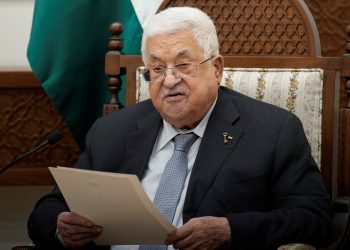As Cross-Border Strife Intensifies, Northern Israeli Residents Face the Prospect of All-Out War
The steady drumbeat of hostilities at the northern frontier of Israel has assumed a fever pitch, with the specter of a full-scale war with Hezbollah casting an ominous pall over the region. For six relentless months, the daily exchange of cross-border assaults between Israel and Hezbollah has sown a deep-seated anxiety among the populace, igniting apprehensions of a widening regional conflagration.
The Lebanese militant group Hezbollah, fortified by years of engagement in Syria alongside President Bashar al-Assad’s forces, possesses an armamentarium both abundant and advanced. Since the 2006 conflict, Hezbollah has methodically amassed a military capability that poses a complex challenge to Israeli defense strategies. A sophisticated network of tunnels echoes the subterranean tactics of Hamas, facilitating clandestine movement and weaponry transport, underscoring the militant group’s preparedness for protracted conflict.
These tunnels, alongside Hezbollah’s continual military conditioning, serve as ominous reminders of the group’s capacity to sustain and elevate hostilities. Yet, to date, Hezbollah has calibrated its assaults, confining its belligerence to a contingent strip of northern Israel. This circumscribed aggression appears tactical — an apparent maneuver to divert Israeli military efforts and focus from the multifront battle raging against Hamas in Gaza.
Within the precariously strained atmosphere, Israel maintains its resolute stance to repel Hezbollah’s presence from the border’s edge, though the mechanics of such an operation remain nebulous. A clarion call for action crescendos from within Israel, fueled by the first mass evacuation of its northern inhabitants. Sixty thousand residents have been uprooted from the sanctity of their homesteads, their lives suspended in the throes of an uncertain and tempestuous future. It is a displacement that mirrors, in grim reflection, the displacement of some 90,000 individuals across the frontier prompted by Israeli retaliatory measures.
The escalation of military exchanges, marked by increasingly sophisticated missile volleys, portends a dangerous trajectory. It is not merely the prospect of mutual destruction that haunts the region; the localized violence bares the potential to ensnare a broader array of actors, implicating not just Israel and Lebanon, but their respective allies in what could swiftly spiral into a dense and destructive regional conflict.
Be Bold
The call within Israel for decisiveness in military strategy emerges as an understandable, albeit fraught response to the perceived encroachment of a palpable threat. However, each tick of the clock, each new day of antagonism on the border, draws the region a step closer to the brink of unrestrained warfare. The Israeli Defense Forces, hardened by a litany of past conflicts, stand watchful and wary, cognizant that the tightening vise of confrontation with Hezbollah may demand responses that hold both regional and international ramifications.
Beyond the tactical movements and the grand strategic considerations, there lies the palpable human cost — a narrative of fear, upheaval, and the unyielding shadow of warfare that stretches across the contours of everyday life in northern Israel. The residents, once ensconced in the somber tranquility of their locales, now grapple with an existence fragmented by rocket sirens and the reverberations of distant bombardments.
Lebanon, already mired in profound economic strife and political tumult, grapples with its own set of trials as the conflict with Israel exacerbates existing fissures. The beleaguered Lebanese state, with its own populace dislodged by military skirmishes, confronts the harrowing aftermath of each Israeli sortie.
As diplomatic dialogues stutter and falter, the international community continues to watch with growing concern. Initiatives for de-escalation remain critical, but the path to peace becomes more intricate with each exchange of munitions across the Israel-Lebanon divide.
This increasingly fraught standoff between Israel and Hezbollah, accompanied by the backdrop of the more expansive Gaza conflict, delineates a precarious period in Middle Eastern geopolitics. The choices made in the coming days — by leaders on both sides of the conflict, by regional powers, and by global mediators — carry the weight of history and the fate of thousands who, though presently displaced, harbor an unwavering hope for the return to a life unmarred by the looming dread of all-out war.







